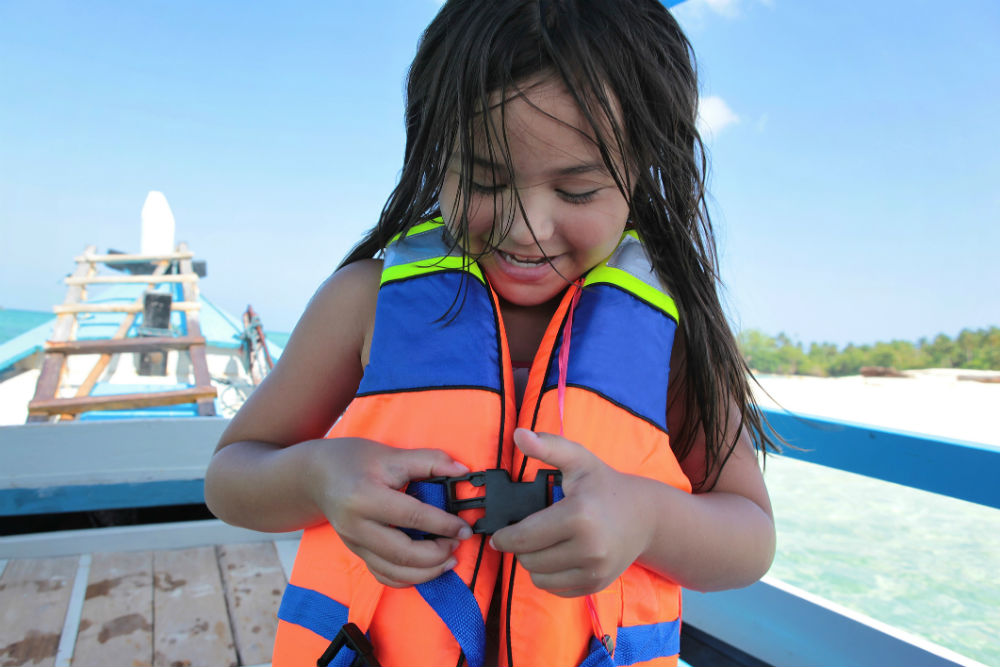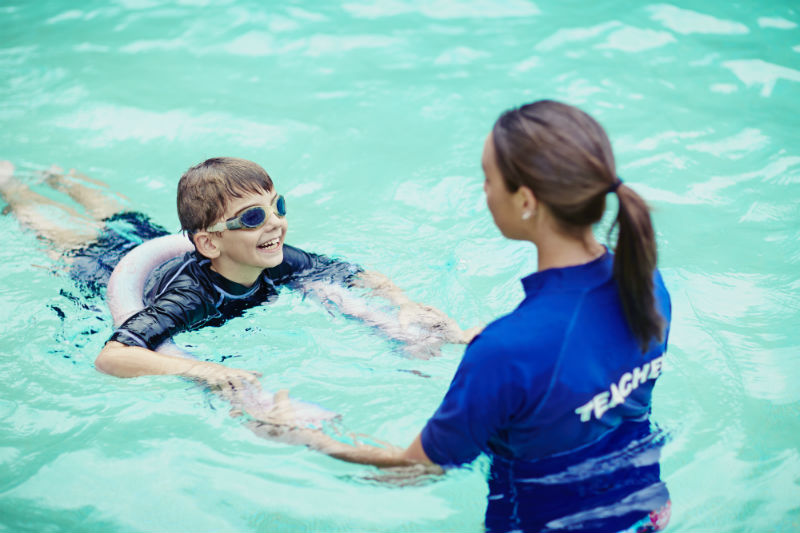
Tragically, children ages 1 to 4 have the highest drowning rates, according to the Centers for Disease Control and Prevention. To help families utilize safe swimming practices, Samuel J. Prater, MD, Medical Director of Emergency Services for Memorial Hermann-Texas Medical Center and an assistant professor of Emergency Medicine at McGovern Medical School at UTHealth, shares his advice below.
To help prevent drowning, “there is no substitute for an active, engaged and sober water-watcher whose full focus remains on children in the water,” says Dr. Prater. “This should be a responsible adult or teen who is actively supervising kids to make sure there are no drowning or near-drowning incidents.” Unlike some scenes depicted in TV shows and movies where a drowning incident is clearly audible with a lot of movement, “drowning typically happens silently and in as little as 30 seconds,” Dr. Prater advises.
Since it can be difficult to remain fully focused and engaged on watching children in the water for an extended period of time, Dr. Prater recommends implementing a “Water-Watcher” system or program with your family and friends, where a few responsible adults or teens trade off dedicated time to supervising children in the water. When one designated adult supervisor’s time is up, another adult or teen will serve the same role for the next predetermined amount of time.
In the following Q&A with Dr. Prater, he offers parents and families his recommendations and guidance for supervising children in the water.
In addition to the advice provided above, what are some other tips for pool and water safety?
To increase safety measures, the child should wear a life jacket in an appropriate size as opposed to arm floaties and other inflatables, especially at the lake, beach or river where the water is typically less controlled than in a pool-type environment.
Do swimming lessons help kids avoid drowning?

How do I protect older children when they swim in the ocean that may have strong currents?
The buddy system should always be utilized when swimming. Parents and adult supervisors should stay in close proximity to the children, and have them wear life jackets.
What are some tips to help keep kids safe while boating?
While boating and during similar activities, it is critical that children wear life jackets. Parents must always ensure the responsible use of a motorized vehicle – meaning zero alcohol and exercising other safe practices.
Should parents be concerned about “secondary drowning” or “dry drowning,” and if so, what are the symptoms for these conditions?
In regard to secondary drowning, there are reports of kids having a near-drowning event and appearing normal, and then sometime after (a few hours, typically less than 6 hours), they begin to experience difficulty breathing and symptoms of lung injury. The idea is that some kids either have a near-drowning event and/or aspirate some water into the lungs (unknown to parents), and this water causes inflammation in the lungs leading to difficulty breathing and low oxygen saturation in blood. Parents should be aware of signs, including fast breathing, coughing, change in color (pale or blue lips/mouth), appearing short of breath, and grunting noises.
Dry drowning refers to a spasm of the vocal cords, causing them to close up, which makes it very difficult for a child to breathe. Water never actually enters the lungs, but the event would be immediately apparent (not occurring several hours later). Both dry and secondary drowning incidents are very rare, making up less than 2% of all drowning-related events.
If my child experienced a water-related incident, how do I know if I should take him or her to the ER?
Signs to look for are loss of consciousness and lethargy in your child. If any sort of stimulation whatsoever is needed to help your child regain consciousness (including a strong pat on the back, CPR, the Heimlich maneuver, or anything related), call 911 or take your child to a pediatric emergency room immediately.
Contact Us
To contact Children's Memorial Hermann Hospital, please fill out the form below.